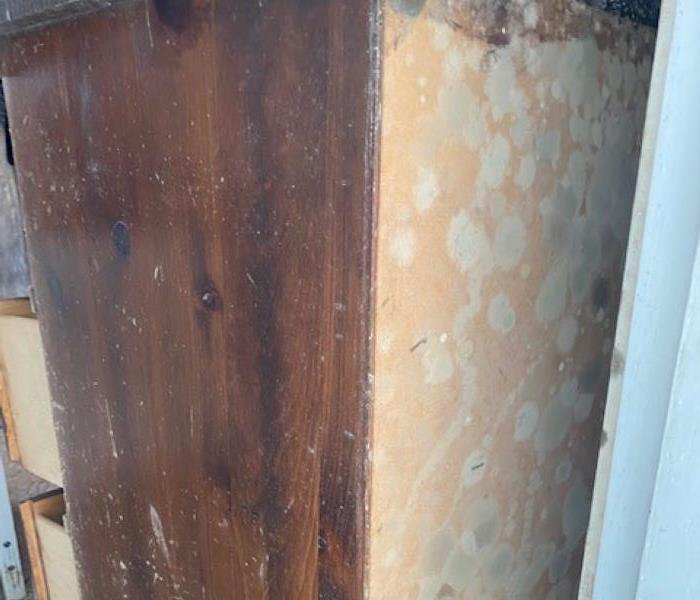Where does mold grow in Connecticut homes?
4/11/2022 (Permalink)
Mold spores naturally exist in all interior and exterior environments and at normal levels, are not harmful. Given the opportunity, however, mold spores can grow quickly and reach dangerously high levels. Most people are aware of the health concerns that are associated with mold in the home and know to keep an eye out for mold growth in their showers and basements. There are some surprising places that mold can grow in the home and business where it's appearance isn't quite as apparent.
- Ceiling tiles – Many businesses choose to have dropped ceiling tiles installed due to the ease of access to the plumbing, fixtures and ductwork above them. In residential homes, ceiling tiles are often found in a finished basement. The lack of light and moisture from pipes and ducts, along with the obscurity of being hidden behind the ceiling, makes the space above your dropped ceiling ideal for mold growth. If you notice staining on your ceiling tiles, take them out and investigate the source of water. Once the leak has been repaired, replace any affected tiles.
- Under your area rugs and floor mats – Most homes and businesses have mats at the front entrance so that those entering can wipe their feet. But the rain, snow and mud that is shaken off boots saturates the rugs, creating a breeding ground for mold. Be sure to pick lift rugs, clean them and allow them to dry out on a regular basis to deter mold from growing.
- Behind the kitchen sink – We do several mold remediation jobs each year in which mold was discovered behind (or under) a kitchen sink. The culprit is typically a slow leaking pipe that goes unnoticed because of its location. The water damage is eventually discovered – sometimes because the cabinetry is rotting, other times due to kitchen renovation – and substantial mold growth along with it. If you notice any signs of leaking water under your sink such as discoloration of the cabinets or lifting of the flooring around the sink, call a plumber in to determine and repair the cause.
- HVAC system – Mold grows in ductwork because of the condensation that can build up due to the moist air blowing through them. HVAC ducts also collect organic material such as dust, pollen, animal fur and dead skin cells. This material happens to be an excellent source of food for mold spores. Typically, a musty odor is the first sign people notice that there may be mold in their ducts. Having your HVAC system cleaned annually will reduce the risk of mold growth by removing these particles.
- Your attic – Moisture in your attic can cause mold to grow. This can occur for a variety of reasons, the most obvious being a small, undetected roof leak. However, mold growth is also caused when an attic has inadequate or improperly installed venting. Additionally, air leaks in the attic allow warm, moist air to enter the space as well. Air leaks can be caused by a variety of reasons- the space around the chimney, the furnace vent and even cable and electrical lines entering the home.
The SERVPRO of Shelton, Naugatuck team specializes in mold damage remediation. Our mold specialists have over 30 years of experience identifying and treating homes and businesses that have mold infestations in the Connecticut.



 24/7 Emergency Service
24/7 Emergency Service
